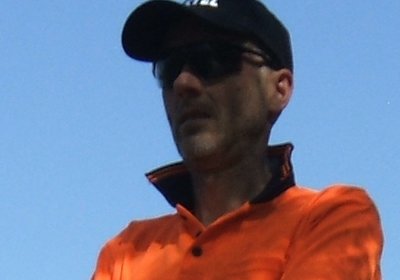
The face behind this site!

The face behind this site!
Hello, and welcome to the site. My name is John Hunter, and I'm from the Blue Mountains in Australia. You may have seen me around the HRSA Sydney group, or attending Model T Ford activities. I've also written for the electronics magazine, "Silicon Chip" and the HRSA magazine, "Radio Waves", and some of you might know me from there. Perhaps you've even seen me out driving the 1926 Model T Ford.
Here are some other things about me, besides
my interests in vintage electronic and mechanical technology.
Where does the name "Cool386" come from?
Back in 2000 when I was establishing a new internet account, I was looking
for a new user name. The computer I was setting up the account was a 386DX40.
Hence the name. That computer is still working in 2022, with Windows For
Workgroups 3.11. These days, very few sites will work properly on early
Netscapes, largely because of the now standard https protocol. The 386
is now mainly used for file storage or running DOS programs, such as Protel
Easytrax.
A Bit of Site History.
All the pages are written using Netscape
Composer 4.8 which keeps things simple, fast, and Windows 3.1 compatible
(still in 2024!).
I created the site in 2003, mainly because
an aquaintance had suggested I do so, because an article I submitted to
a magazine did not get published. I was rather disheartened because of
the amount of work I had put into it, but having my own site would give
me the freedom to publish whatever I wanted. As something of a technical
writer, I enjoy writing articles that educate and help understand how things
work. I'm a firm believer in distributing information. It makes for a better
society when people are educated and think about things.
In those early days, photos were taken
with a Sony Mavica FD75. The resolution is very poor by today's standard,
being of VGA quality 640 x 480 pixels.
The site was intially hosted by Bigpond
(an Australian ISP) who provided 10Mb. That amount of space seems incredibly
small by today's standards. When you think about it, it was about seven
floppy discs worth of files!
One of the concessions I had to make,
was therefore to reduce the photo resolution even further, to make the
best of what I had available. As you look through the site, you'll see
these early low res photos in some of the older articles.
As a stop gap measure, as my space was
being used up, I started hosting articles on the Geocities free hosting
site, in addition to Bigpond. This worked fairly well until Bigpond terminated
their web hosting in 2009.
So, I had to move the entire site to Tripod
(another free host), where all seemed well for the next four years, until
everything was deleted with no warning. I then changed my ISP to iinet,
who provided 1Gb of space. This was a huge improvement, and with the aquisition
of a Fuji Fine Pix A500 in 2010, I could at last improve the photo quality.
Now I was using an 800 x 600 screen resolution for most photos. I could
have increased this, but still with dial up internet (until May 2017),
I compromised between resolution and download speed.
For some time I had been thinking of buying my own domain name. To do so would give me independence from ISP's, and solve the problem of constantly moving the site to new hosts, wondering when the next time something would happen. Well, it did. At the end of August 2020, iinet deleted the site. I purchased the cool386 domain name, and began the mammoth task of transferring something like 278 pages across. It took several days. There was also the learning curve of how to upload files, etc., which was more complex than simply using ftp and letting the host deal with all the finer details. The advantages of my own domain name are many. Now I have 10Gb with my host, and that allows me to include files for downloading, and of course even better photos. My standard now is 1024 x 768, and I'm using a Sony NEX-5N.
Importantly, the domain name is here to
stay, so where my site has been linked in forums, etc., the links will
remain current.
The lesson here is, if you have a serious
website, get a domain name and get it hosted independently. Free hosts
and ISP's are good to begin with, but cannot be relied on for the long
term.
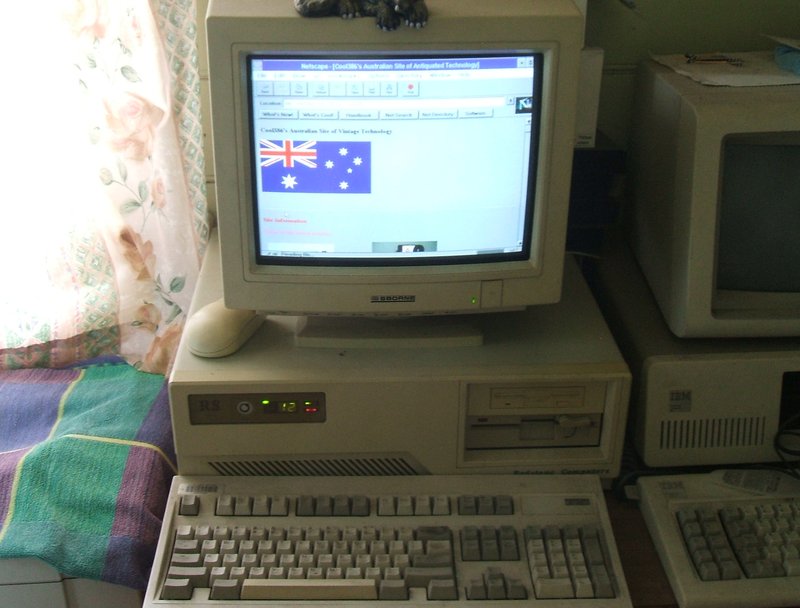
Homepage shown in Netscape 2.0 operating under Windows For Workgroups
3.11. (Yes, that's an IBM XT next to it).
Articles are updated from time to time as required and time permits. The quality of circuit diagrams is largely because of lack of a drawing program which is as quick to use as is hand drawing them. One improvement I am experimenting with is 'one click to email'. Anyone who has emailed me via the site until recently (2023) knows the email address is presented as a jpg image. That is simply to prevent spam, since spam bots constantly search for xyz@xzyz.com in texts, gathering up email addresses to later fill with garbage. Now clicking on that image will link you to a script which composes the email.
I welcome email correspondence, but note that I might be a bit slow to reply. I'm not tethered to the internet all day, and some queries take a bit of research to answer. Also, anything that involves scanning pages is time consuming. And I do have a life outside of electronics!
The Blue Mountains.
My home since 1988. The Blue Mountains
is part of the Great Dividing Range, to the west of Sydney. The settled
area consists of two ridges, roughly running east to west. I live on the
southern ridge, the most populated, for it was along here the first path
was found to the Central West in 1813. Most of the population is centred
around the railway line and highway which runs along this ridge, spanning
most of the towns from Lapstone to Lithgow.
Surrounding these are numerous gorges
and valleys. Most of the area is national park. To the south is the now
flooded Burrogorang Valley which supplies Sydney with most of its water.
Highest elevation is a little over 1000m.
On the western side of the mountains are
the famous Jenolan Caves, and the town of Oberon, famed for forest industries
and trout fishing.
Climate is quite variable, with the upper
mountains towns, Wentworth Falls to Lithgow being cool, even in summer.
A day or two of snow anytime from May to October is not unusual.
The mid mountains towns, where I live,
are somewhat milder. In fact, despite the elevation 600~700m, it is warmer
than parts of western Sydney. From Linden to Bullaburra, one can enjoy
outdoor activities even in winter.
Further down, Lapstone to Springwood,
the climate is not hugely different to parts of Sydney. One fortunate aspect
of being in the mountains is lack of summer humidity.
The Blue Mountains is a famous tourist
attraction. However, since WW2, only the upper mountains is now seen as
a tourist destination. This is the area from Wentworth Falls to Mt Victoria,
renowned for majestic valley views, quaint cafes and tearooms, and antique
shops. Bushwalking is a major drawcard, with a lifetime of trails to explore.
Mountain biking, abseiling and horse riding are also very popular.
Tourism is the major income for the mountains.
Unless you work in tourism or hospitality, chances are you commute to Sydney
for work.
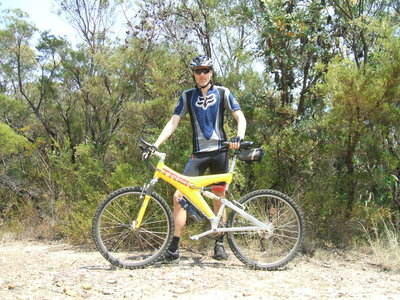
At Woodford with the 1996 Trek Y33.
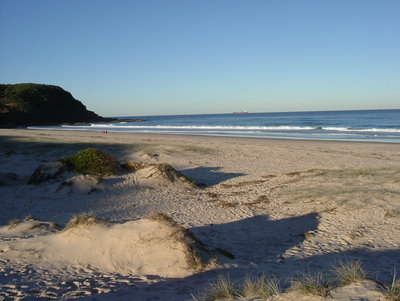
Birdie Beach, Central Coast.
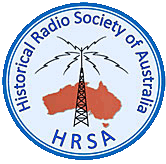
I have been a member of the Historical
Radio Society of Australia since 1992, as part of the Sydney group.
This is a highly recommended organisation if you are into vintage electronics.
I attend the bi-monthly meetings at Winston Hills Public School. There
is a technical talk followed by an auction, or alternatively a swap meet
twice a year. If you like collecting vintage radios you will pay far less
than ebay!
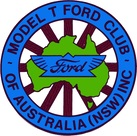
Since 2002, I have also been part of the
Model
T Ford Club of Australia. The club has monthly meetings, display days,
and the occasional club run. Every three years is a national rally organised
by alternate state clubs.
As I have full registration for my Model
T, I don't actually need to be part of the club to drive my car, but it's
a useful way to meet others to discuss and learn about the cars, as well
as the fun of driving in a convoy of Model T's.
In some instances a lot of redesign and
modification has to be done, because original parts are no longer available.
For example, the volume control in this set https://www.cool386.com/picnic_awa/picnic_awa.html
Many hours were spent trying to find an
equivalent which was not obtainable. The original control had to be dismantled
and rebuilt using a part, that luckily, I did have. However, the rebuilt
control now had a different value of resistance. The circuit then had to
be modified to use this different value of resistance. A typical tradesperson
in the present day charges about $100 an hour. I spent several eight hour
days working on this set, recapping it, redesigning the circuit, and rebuilding
the original control. Have you worked out the cost? Would you pay
it?
Yet, if I was to charge what my time was
actually worth, most people would think I was ripping them off. (I'd like
to see them do a resto and redesign in less time...). So, in the end, I
charge less than half, and lose out.
There was also a problem in this particular
set, with the unusually sized NiCd cells it used. The owner was extremely
lucky I did have some which fitted, with some modification, but those were
the only ones I had, which have all gone now. That particular job was extremely
stressful and anxiety inducing, and I have since turned down restoration
requests for that model.
Then there was a succession of mid 1950's Astor car radios. As is often the case, knobs are missing and dials are damaged. The owners have no idea just how lucky they were, that I could get dials that fitted. It was a bit of a gamble on my part, since the dials weren't for the exact variant of the particular model. Luckily they did fit, and anxiety was averted. But, what if the ordered dials didn't fit? What then?
One of the Astors was this SS https://www.cool386.com/astor_ss/astor_ss.html
The tuning mechanism was a mechanical
nightmare. The flimsy construction, and requirement that everything be
"just so" with its adjustment, doesn't fare well for a reliable future.
Yet, I had to spend considerable time analysing the operation, then getting
the mechanism to work. Sending it back to its owner, I could only hope
that it kept working. I really don't have any faith in its design. The
fact that a previous technician had completely bypassed this mechanism,
with the radio only a few years old, was already an ominous sign. How will
the owner react if / when it fails?
And then was another redesign with this
one https://www.cool386.com/astor_arm/astor_arm.html
Would you expect to find the previous
owner had replaced the IF transformers with ones of the wrong frequency?
Another couple of days work there, redesigning the front end to make it
work with the 'wrong' tuning unit. Yet, all that extra work goes unappreciated,
because the radio still looks the same from the outside. What if I couldn't
have got the tuning unit and incompatible IF transformers to work together?
The owner had already spent a decent amount just to get the radio.
These examples of redesign to get things working brings up another topic. "He charged $50 just to replace two capacitors! Anyone can do that!". Ah yes, but can "anyone" do the necessary diagnosis and testing (which incidentally also takes time), to identify which components were faulty? Part of what you're paying for is the years of skill of knowing what to do.
Once restored, we have the possibility
that the set breaks down a day or a week after it goes back to the owner.
Not a good look is it? Immediately, I am seen as incompetent, having ripped
off the owner to the tune of $350 or whatever. Short of replacing every
single part with a new one, it is impossible to guarantee the restoration.
The remaining 80 year old parts might keep going forever, or they might
fail the next day. Who is going to pay for the time and parts it takes
to rebuild a car radio or television from scratch, assuming all the original
transformers and parts unique to that set are available? In practice, the
likely components (paper condensers and carbon resistors) are replaced,
since these are known to be problematic and are the cause
of most problems. In the majority of instances of a vintage
restoration, that's all that's needed, along with cleaning of switches
and pots.
But, a transformer could
go open circuit in a week...
Anyone who reads "The Serviceman" column
in Electronics Australia / R&H, or Silicon Chip, will have read about
the customers who regard servicemen as out to rip them off, or regard them
as incompetent if the set fails soon after.
"You fixed it yesterday, and now it's
not working again!" (often with a totally unrelated fault - which the complaining
customer conveniently overlooks).
Model T coils are something that often
come my way. They're a tedious job, and one thing which Model T people
have a reputation for, is wanting everything cheap. And yes, I have
had them fail after a restoration - not often, but it can happen. I was
about to pull the plug on doing them up after one incident. A short time
after the coils had been sent back to the owner, I received a call, which
in a round about way, accused me of keeping his coils, while returning
a defective, unrestored set. How this could have happened was a mystery,
since I certainly didn't have his originals.
Eventually, it transpired that he had
misplaced the returned coils, but had found another set in his workshop
which he thought were the ones I was supposed to have repaired. He apoligised
for his "senior moment", but it did feel as though my reputation had already
been tarnished.
One repair for an amplifier power supply required a bit of a redesign, because it wasn't clear what the part number of the failed IC was. I had to trace out the circuit, then look through the data sheets of types which might work in that configuration. As it happened, the IC that I chose was not exact, and required modifications to make it work. Again, I couldn't charge for the several days work it really took https://youtu.be/hMdYD7gMOPA
A car radio repair for the owner of a 1962
Rolls Royce, involved a repair to the power switch on the back of the volume
control. It was a conventional switch pot, but with dimensions and a shaft
which were not standard in Australia. The phenolic switch toggle had broken.
All I could do was super glue it back together with a piece of plastic
bracing. It worked, but I advised the owner that it was likely to
fail eventually. Apparently it did about six months later, and
I was accused of being incompetent.
The same individual also owned a 1985
Bentley. The bonnet light did not work. This fault was traced back to a
multi-pin connector mounted on the firewall. Upon removing the plug, numerous
connections were found to be severely corroded. Unfortunately, one or more
broke when the plug was withdrawn, and other electrical functions in the
engine bay, namely the ignition, no longer worked. Guess who got the blame
now that the car wouldn't start? I wonder, who would have got the blame
when the ignition finally failed, when the car was being driven miles from
nowhere, had I not touched it?
It's not all negative of course. This job was a pleasure, and so was dealing with the owner https://www.cool386.com/tasma/tasma.html
I've reached the time in my life where I don't need to work for an income, or deal with the stress that could entail. Yes, I can probably make your vintage car radio or old television work again - but I can't guarantee it will stay working forever - or even into the next day. Good luck finding someone who can guarantee it!
